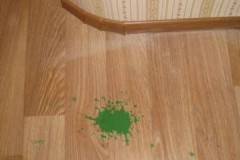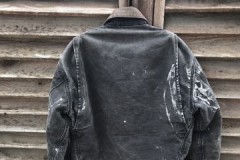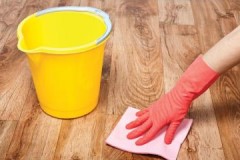3 proven techniques to remove old paint from wood
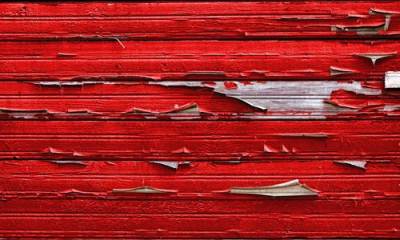 Removing paint from a wooden floor and not damaging it is not an easy task, but you can cope with it if you know some of the features of the work.
Removing paint from a wooden floor and not damaging it is not an easy task, but you can cope with it if you know some of the features of the work.
There are several methods to get things done. The paint is removed mechanically, thermally and chemically, each of which has its own advantages and disadvantages.
How to remove the old paint from a tree at home, you can learn from this article.
Content
How to properly prepare for the upcoming work?
It is wrong to start peeling paint off wood right away. First you need to prepare. Depending on the selected cleaning method, the following tools and accessories may be required:
 personal protective equipment: glasses, gloves, mask, respirator;
personal protective equipment: glasses, gloves, mask, respirator;- rags;
- spatula, sandpaper;
- construction hair dryer;
- drill or grinder;
- grinder and attachments;
- solvent.
When all the tools are collected, you need to think about the following points:
- Place of work... If a chemical method of cleaning is intended, then it is best to do it outdoors or in a well-ventilated room.
- Protection of surrounding objects and surfaces... They need to be covered with unnecessary cloth or plastic wrap.
- Ease of access... If there is such a need, then the object to be cleaned must be moved in advance.
- Thickness of paint coating... If the layer is thin, then new paint can be applied directly to it, without preliminary cleaning. It is better to remove thick coating. Mechanical cleaning is the preferred method.
- Duration of coating... The old paint coat is easily removed from the wood and should not be left on. Otherwise, the new coating will lie unevenly and peel off.
How and what to remove from a wooden surface?
 There are 3 ways to remove paint from wood:
There are 3 ways to remove paint from wood:
- Mechanical method... It involves cleaning with some kind of device, for example, a grinder or a spatula.
- Chemical. To remove the composition, use special solvents.
- Thermal. This method involves heating the paint, after which it can be easily removed.
In order not to damage the product and not harm health during work, you must follow the algorithm of actions that exists for each cleaning method.
Find out how to remove old paint from a wooden floor here, from wooden doors - here.
How to clean it mechanically?
The mechanical cleaning method is the most accessible, but laborious. It is implemented using various tools.
Removing paint and varnish with sandpaper:
- prepare several sheets of sandpaper with coarse and fine abrasive;
- sand the top layer with a coarse abrasive material;
- remove paint residues with fine abrasive paper.
When processing an impressive surface is to be done, it is more rational to use a grinder.
Features of its application:
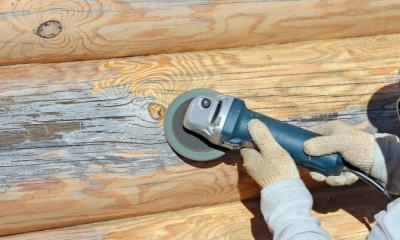 Purchase an emery flap disc. To work, you will need several nozzles at once, since they will be clogged with paint particles and sawdust.
Purchase an emery flap disc. To work, you will need several nozzles at once, since they will be clogged with paint particles and sawdust.- Connect the device to the power supply and systematically process the surface of the tree.
- You need to hold the grinder parallel to the product, with a little pressure.
If after cleaning there are small areas with paint, they are cleaned by hand, using sandpaper, or a stiff metal brush.
To remove the coloring composition mechanically, you can use a drill, grinder and spatula.
Pros of mechanical cleaning:
- careful processing of the product;
- the ability to control the applied force;
- lack of smell;
- low cost of consumables.
How to quickly remove with chemicals?
Chemical removers can be used to remove paint. It is best to purchase products designed for wood processing.
General instructions for use:
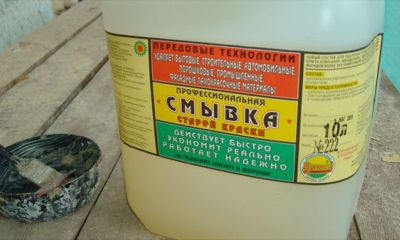 Remove all dust and dirt from the surface.
Remove all dust and dirt from the surface.- Apply solvent to the product to be cleaned. The most convenient way to do this is with a paint brush or roller.
- Leave to act. The times will vary depending on the selected line-up. Most often, 20-30 minutes is enough.
- Remove softened paint with a spatula.
- Wash off residues of the product with clean water.
If it was not possible to remove the composition from the first time, then the procedure must be repeated.
Washes that can be used to remove paint from wood:
- Docker wood: paint remover for wood. The cost of 5 liters of gel is 2700 rubles. This composition effectively removes any paints and varnishes and does not harm wood. The gel works quickly, after 10 minutes you can start cleaning. The product is consumed very economically, its layer should not exceed 1-2 mm.
- Syntrol: paint remover from wood. The cost of 1 kg of funds is 740 rubles. This amount is enough to process 5 sq. m. The wash is fast action. You can start removing paint in 5-12 minutes after application.
- Washing off Novbytkhim... The cost of 0.5 liters is 115 rubles. It is a versatile tool that can be used for working with wood. Its duration is 20-30 minutes.
You can purchase funds in hardware stores and online markets.
Advantages of dry cleaning:
- there is no need to apply significant physical effort;
- you can process uneven surfaces and hard-to-reach places;
- high speed of work.
The disadvantages of the method include financial costs and the release of toxic vapors into the air.
How to make a DIY cleaner?
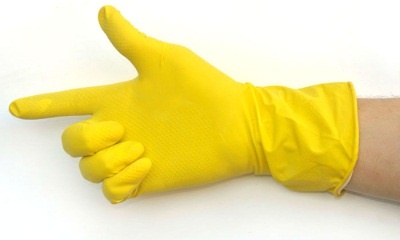 You can prepare the cleaner yourself.
You can prepare the cleaner yourself.
The simplest recipe:
- 2 parts ammonia;
- 1 part turpentine;
- the two components are mixed with each other and applied to the paint.
The remedy will begin to act in 20 minutes. The paint will foam and flake off. If the layer is thick, then the holding time is increased to 40 minutes.
Another recipe for making a homemade wash that is suitable for treating wooden surfaces:
- a piece of chalk;
- caustic soda;
- water;
- oat flour to thicken.
Thermal method
You can use a construction hairdryer to remove paint. Hot air comes out of it, under the influence of which the composition softens and it can be cleaned off with a spatula.
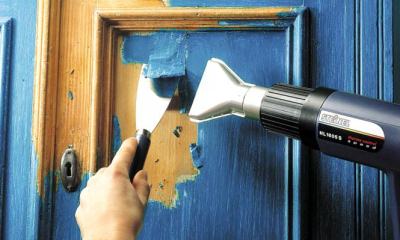 Mode of application:
Mode of application:
- Connect the device to the network.
- Point the hair dryer at the surface to be treated.
- Wait until the paint softens.
- Clean it off with a spatula.
- Work out the entire product in a planned manner.
In addition to a hair dryer, you can use an iron and foil through which the paint is heated and cleaned with a spatula. This method can be used only if small surfaces need cleaning.
Both paint and wood can catch fire, so use electrical appliances with care. There should be water at hand with which you can extinguish an incipient fire.
Which option should you give preference to?
Giving preference to one or another cleaning method, you need to build on a specific task, which stands in front of a person, namely:
- If the surface needs high-quality processing, then 2 methods are combined: first, the object is worked through with a professional solvent, and then the areas are cleaned manually.
- If you need to save money, then cleaning is carried out using sandpaper or using foil and an iron.
- When safety comes first, choose dry cleaning.
Features for different types of dyes
Depending on the type of dye, there will be different ways to remove it:
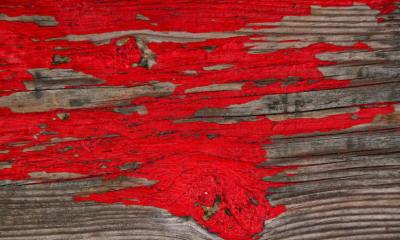 oil formulations well cleaned with a spatula or grinder;
oil formulations well cleaned with a spatula or grinder;- water-based paints susceptible to solvents;
- acrylic paint can be removed mechanically or chemically;
- powder paints are washed off with a powerful jet of water, for example, from a pressure washer;
- hair dyethat gets on a wooden surface can be washed off with an alcohol solution.
It is best to remove several layers of different paint using the thermal method.
The most common mistakes
The most common mistakes people make when trying to remove paint from wood surfaces:
- Applying chemicals to the entire area at once. If the composition is used for the first time, then first you need to process a small area.
- Cleaning wood with too hard brushes or coarse abrasive nozzles. They can lead to the destruction of the breed.
- Long exposure of washes and solvents on wooden surfaces. Even the most expensive and effective washes can damage the product. Therefore, it is not recommended to leave them longer than 1-2 hours.
- Overheating of the surface when trying to remove paint by thermal method. This situation is fire hazardous.
- The use of plastic containers when working with washes. Aggressive formulations can damage them.
Important recommendations
To ensure that the process of removing paint from wood is efficient and safe, the following recommendations must be observed:
 Do not press on the surface of the product with great force. This is true for mechanical cleaning.
Do not press on the surface of the product with great force. This is true for mechanical cleaning.- Always use personal protective equipment.
- Protect floors and surrounding objects with plastic wrap.
- Do not heat the wall in the area of wiring and electrical appliances.
- After applying the wash, the surface must be rinsed with clean water.
- If aggressive substances come into contact with the skin or mucous membranes, immediately rinse them with plenty of water.
Observing these recommendations, you can qualitatively clean any surface from paint.
Related Videos
A few basic ways to remove old paint from wood surfaces in the video:
Conclusion
It is easy to remove the coloring composition from wooden surfaces if you correctly approach the solution of the issue... By choosing the best method and observing safety rules, you can quickly and inexpensively cope with the task.
It is imperative to take into account the type of paint, the thickness of the applied layer and the time that is planned to be allocated for the upcoming work.

